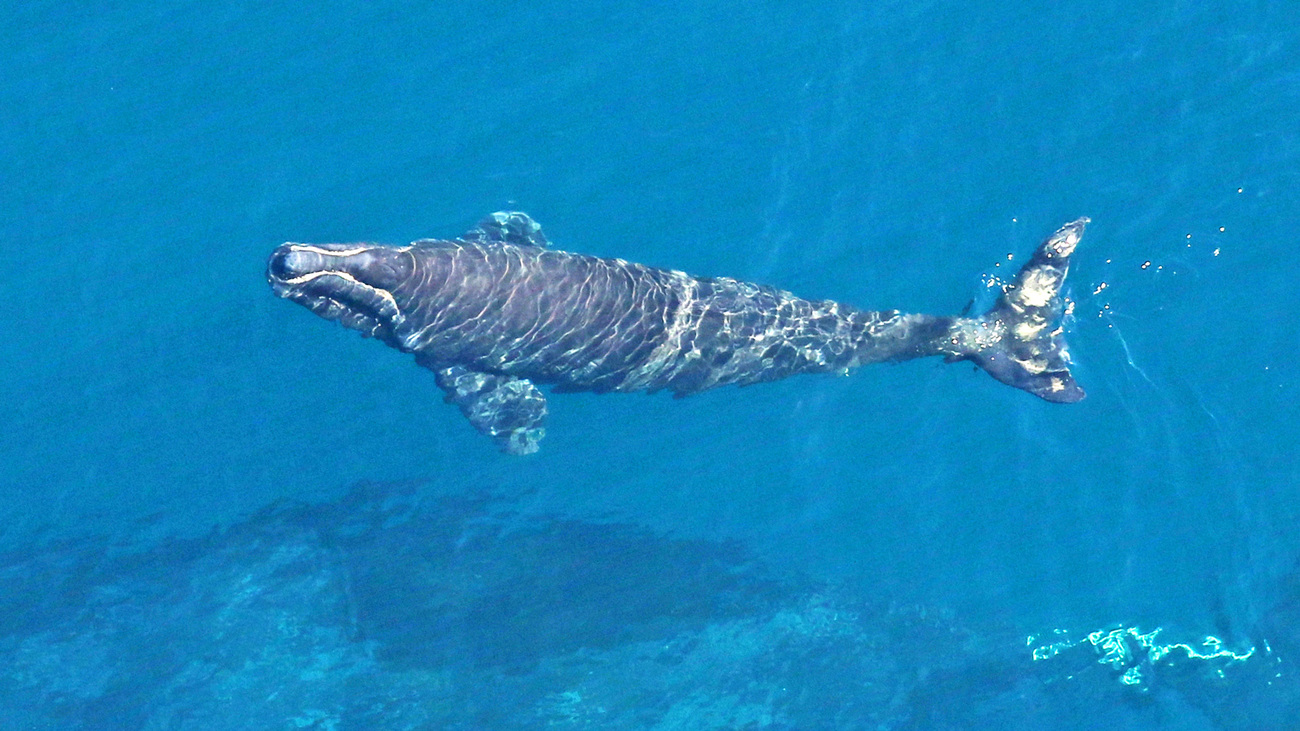Blog
Vultures: Nature’s cleanup crew and wildlife detectives
Read moreFirst North Atlantic right whale calf of the season struck by vessel

On January 10th, 2024, NOAA announced that there was an injured North Atlantic right whale calf off Edisto, South Carolina. The calf was seen on January 3, 2024, and videos shared by the public showed several propeller wounds on the head, mouth, and left lip of the calf which was consistent of a vessel strike and the calf will likely die as a result.
The Florida Fish and Wildlife Conservation Commission and New England Aquarium used the videos collected by the public to identify the whales as Juno #1612, the first documented mother of this calving season, and her calf which was first seen on November 28th, 2023, off Georgetown, South Carolina. At this time, it’s unknown if Juno is also injured.
IFAW is dismayed at the news of a North Atlantic right whale calf being struck by a vessel. This likely death, among the many others due to vessel strikes are preventable. Reducing vessel speeds is the leading approach to reduce the threat of vessel strikes. Globally accepted research shows that slowing vessel speeds to 10 knots reduces a whale’s risk of death from vessel strikes by 80%-90%.
“Blunt force trauma, lacerations, and death are likely outcomes of a collision with a vessel,” said Dr. Sarah Sharp, Animal Rescue Veterinarian, IFAW. “Vessels of all sizes are at risk of harming the critically endangered right whale.”
“This likely death of this critically endangered calf is utterly tragic, but completely avoidable. Collisions with vessels are one of the leading causes of death for the North Atlantic right whale.” said Kathleen Collins, Senior Campaign Manager, IFAW. “Being aware while on the water and slowing vessels down when whales are in the area is the best way to save this critically endangered species.”
In 2022, NOAA proposed updates to the 16-year-old rule to reduce death and serious injury to right whales. These updates broaden the vessels included under speed restrictions from just ships (65 feet and greater) to all vessels 35 feet and greater. This is because since the rule was originally enacted, approximately 40% of known strikes have involved vessels in this smaller size class. It is critical that this new rule is put into force to help save this species from extinction.
##
Background facts:
Our work can’t get done without you. Please give what you can to help animals thrive.
Unfortunately, the browser you use is outdated and does not allow you to display the site correctly. Please install any of the modern browsers, for example:
Google Chrome Firefox Safari